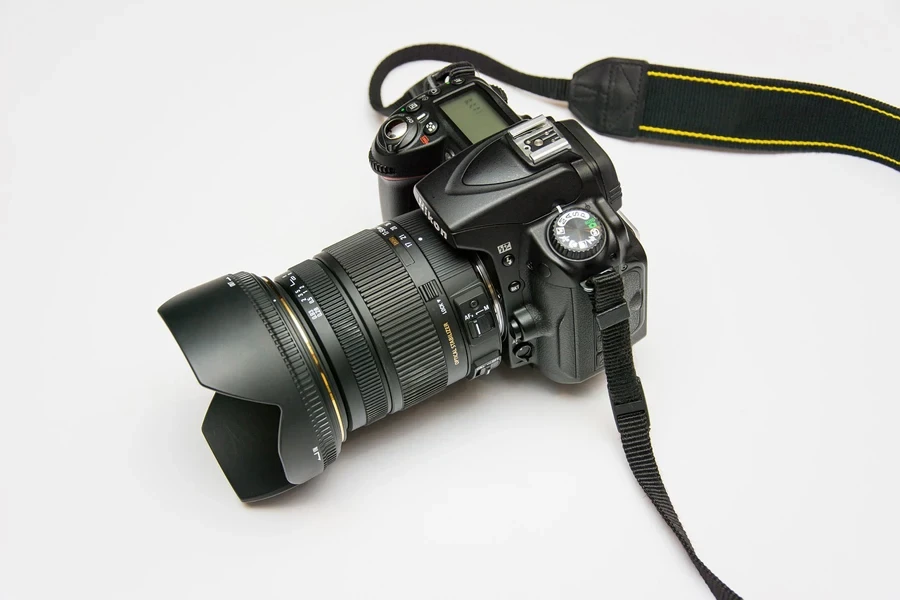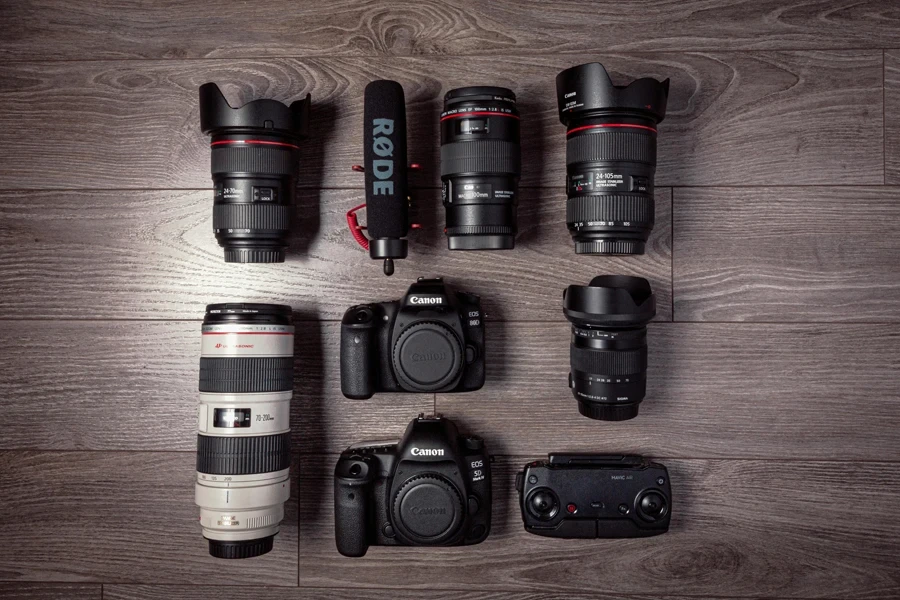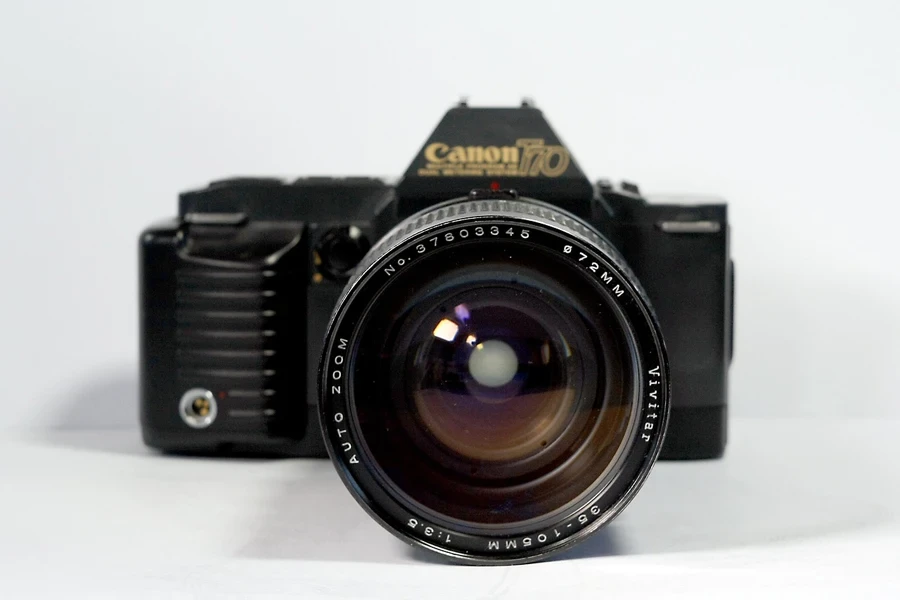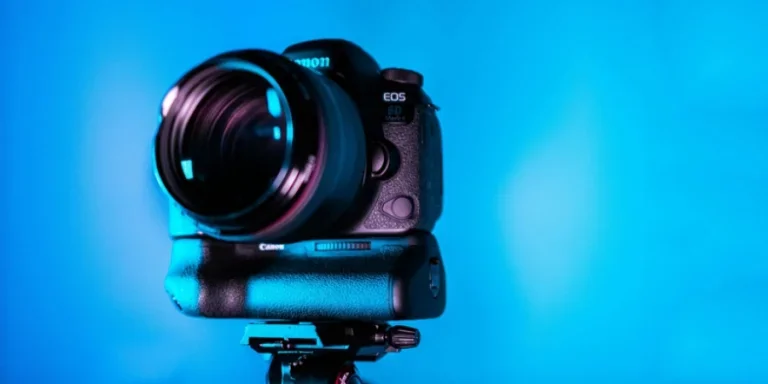Table of Contents
Introduction
Market overview
Key technology and design innovations
Top-selling models driving market trends
Conclusion
Introduction
Camera lenses are essential components in consumer electronics, significantly influencing image quality and user experience. As technology advances, lenses are becoming more sophisticated, with innovations enhancing everything from smartphone photography to professional-grade cameras. The growing demand for high-quality visuals across various applications, including social media and virtual reality, is driving the market forward. Manufacturers are continuously pushing boundaries to improve features like resolution, stabilization, and versatility. This evolving landscape presents new opportunities and challenges for the industry.

Market overview
The camera lens market is projected to grow significantly, reaching USD 5.87 billion in 2024 and expanding further to USD 8.02 billion by 2029, at a compound annual growth rate (CAGR) of 6.5%, according to Mordor Intelligence. This growth trajectory is fueled by continuous advancements in camera technology, particularly in the smartphone segment, where innovations such as multi-lens setups, optical image stabilization, and computational photography have become increasingly common. These features not only enhance the quality of images but also meet the rising consumer demand for professional-grade mobile photography, a trend strongly influenced by social media’s emphasis on visual content. As more users seek high-quality cameras integrated into their smartphones, the market for camera lenses continues to expand.
According to Mordor Intelligence, the Asia-Pacific region stands out as both the largest and fastest-growing market for camera lenses, driven by a robust smartphone manufacturing ecosystem. China plays a central role, with an estimated annual production of nearly 1.6 billion smartphones, highlighting the region’s significant contribution to the global supply chain. The demand is also bolstered by increasing smartphone adoption rates, projected to rise from 76% in 2022 to 94% by 2030, indicating a steady growth in consumer electronics consumption. Additionally, the use of camera lenses in the automotive industry, especially for advanced driver-assistance systems (ADAS) and autonomous driving applications, adds another layer of growth to the market. Despite these opportunities, the industry faces challenges in scaling production while maintaining optical precision, quality standards, and managing manufacturing costs effectively.

Key technology and design innovations
Technological and design innovations have significantly transformed camera lenses, especially in the realm of smartphone photography. According to Mordor Intelligence, smartphone manufacturers are increasingly integrating features like optical image stabilization, multi-lens arrays, and computational photography techniques to deliver professional-grade image quality. Optical image stabilization reduces motion blur by compensating for handheld movements, enhancing sharpness in both photos and videos. Multi-lens setups, which often include combinations of wide-angle, ultra-wide, telephoto, and macro lenses, enable users to capture various types of scenes with a single device, whether it’s a close-up shot, a distant subject, or a broad landscape. Computational photography adds another layer of enhancement by using algorithms to improve aspects like HDR (high dynamic range), night mode, and portrait effects, further narrowing the gap between smartphone and traditional camera capabilities.
Spherical and ultra-wide lens technologies are gaining momentum across different applications, from immersive content creation to specialized photography. Spherical lenses, which enable 360-degree imaging, are now widely used in virtual reality, real estate, and tourism, where capturing a complete view can provide a more engaging experience. According to Hyperion Optics, advancements in these lenses include higher resolutions and refined optics that improve image sharpness and reduce chromatic distortions. Ultra-wide lenses, typically ranging between 8mm and 24mm focal lengths, have also grown in popularity for capturing sweeping landscapes, cityscapes, and architectural photography. These lenses provide a broad field of view, allowing photographers to include more of the scene in a single frame, which is ideal for expansive subjects and creative compositions.

Material innovations have significantly contributed to the advancement of camera lenses, particularly through the use of hybrid materials that combine glass and plastic. According to Mordor Intelligence, the adoption of these materials helps balance various factors, such as weight, durability, and optical precision. Hybrid lenses are engineered to minimize chromatic aberrations and flare, which can degrade image quality, especially in challenging lighting conditions. For instance, combining different materials allows for better correction of color dispersion, improving the sharpness and clarity of the final image. This innovation is particularly important for mobile devices, where the lens must be compact yet capable of delivering high-quality results.
The evolution of image stitching algorithms has brought significant improvements in panoramic and 360-degree photography. According to Hyperion Optics, modern stitching techniques use advanced software to blend multiple images seamlessly, reducing visible seams and distortions that were once common in earlier technologies. New algorithms also account for lens distortion, exposure differences, and color mismatches across frames, resulting in more natural-looking panoramic views. With the rise of virtual tours, real estate walkthroughs, and immersive marketing, these improvements make it easier for content creators to produce high-quality spherical visuals. Real-time stitching capabilities, powered by increased processing power in smartphones and cameras, are making 360-degree content creation accessible even to non-professional users, further broadening the market for these advanced lens technologies.

Top-selling models driving market trends
The camera lens market is heavily influenced by top-selling models that incorporate advanced lens technologies, with smartphone lenses leading the way. According to Mordor Intelligence, the growing popularity of smartphones with multi-lens setups, such as wide-angle, ultra-wide, and telephoto configurations, is driving market trends. Leading models like the Apple iPhone 15 Pro Max and Samsung Galaxy S23 Ultra feature sophisticated lens arrays that include optical image stabilization and AI-powered computational photography. These features enable users to capture professional-quality photos directly from their mobile devices, making high-end camera functionality more accessible to everyday consumers. The increasing integration of periscope lenses for enhanced optical zoom is another trend shaping the smartphone lens segment, allowing for better image clarity even at significant distances.
In the mirrorless and DSLR camera market, popular interchangeable lenses from brands like Tamron, Canon, and Sony continue to shape trends. Models such as the Tamron 28-75mm F/2.8 for Sony E-mount mirrorless cameras and Canon’s RF 24-70mm F/2.8 L lens are highly sought after for their versatility and image quality. According to Mordor Intelligence, these lenses are favored by both amateur and professional photographers due to their ability to deliver sharp images across a range of focal lengths, making them ideal for a variety of shooting scenarios, from portraits to landscapes. Sony’s G Master series also stands out for its premium build quality and optical performance, catering to users who prioritize high-resolution photography and videography.
The demand for specialty lenses, such as macro, telephoto, and super-telephoto lenses, is strong among professionals and enthusiasts. According to Visual Education, telephoto lenses ranging from 100mm to 800mm are particularly popular for wildlife and sports photography, where capturing distant subjects with clarity is crucial. Macro lenses, like the Canon EF 100mm F/2.8L Macro, are widely used in fields such as product and nature photography due to their ability to produce detailed close-ups of small subjects. These specialty lenses are essential tools for photographers who require specific functionalities that standard lenses cannot provide, making them a key segment in the interchangeable lens market.
Emerging spherical lens cameras are gaining traction, especially for immersive content creation. Hyperion Optics reports that spherical lenses, which enable 360-degree imaging, are increasingly being used in virtual reality, real estate, and tourism. These cameras allow content creators to capture fully immersive visuals that provide a comprehensive view of the environment, making them suitable for virtual tours and interactive experiences. As advancements in stitching algorithms and image resolution continue, spherical lens cameras are becoming more popular among creators who aim to deliver cutting-edge content, further expanding the applications of camera lenses in new and dynamic ways.

Conclusion
Technological advancements in camera lenses, from smartphone multi-lens setups to specialized telephoto and spherical lenses, have significantly shaped the market, enhancing image quality and expanding applications across consumer electronics and professional photography. These innovations not only meet the growing demand for high-quality visuals but also drive new opportunities in areas like virtual reality and autonomous systems. As the market continues to evolve, further growth is expected, particularly in regions like Asia-Pacific, where manufacturing capabilities and consumer adoption rates are high.




